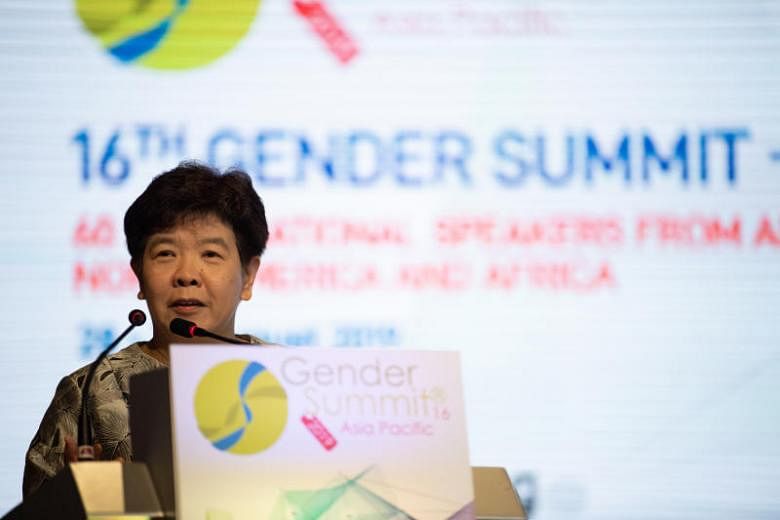SINGAPORE - In the past, car manufacturers largely used dummies that mimicked the male body for crash tests and designed safety features, including seat belts, with male drivers in mind.
But as reported in the American Journal of Public Health in 2011, a woman is typically shorter with smaller necks, and because the safety features were designed for male drivers, a woman at the wheel was 47 per cent more likely to sustain a severe injury to her spine and brain.
Chairman of the Agency for Science, Technology and Research (A*Star), Ms Chan Lai Fung, noted this fact in her keynote speech on Aug 28 at the opening of the 16th Gender Summit.
The two-day summit was held at Biopolis. It was co-organised by, among others, the Singapore Women in Science organisation and Portia, a British non-profit gender in science organisation.
The summit focuses on the longstanding issue of gender inequality in science.
In Singapore, around 60 speakers from 24 countries spoke about diversity and gender in science, technology, engineering and mathematics (Stem) and their impact on the wider population.
A number of speakers noted that under-representation of women can affect the efficacy of policies in healthcare, industry and government.
For example, a gender-imbalanced research team may fail to consider certain variables that are influenced by a difference in socio-economic circumstances or biological sex.
Several speakers noted that a World Health Organisation (WHO) report found that gendered assumptions in research often led to worse healthcare outcomes for both men and women.
Policymakers, for instance, may forget to consider that a poorer woman in the developing world can be excluded from healthcare services due to her reliance on her spouse's income. This means that many women go without accessible healthcare.
The WHO report also found that such gender inequalities negatively affected men. For example, they were excluded from services that were typically perceived as "feminine", such as reproductive issues and mental healthcare.
The Gender Summit had also convened workshops and panels to examine efforts to increase gender equality.
In a keynote speech, president of Nanyang Technological University Subra Suresh noted that the digital age presented unique opportunities to increase women's participation in the workforce.
"For example, technology applications for assisted living could make it easier for women to work, while also enabling them to care for their ageing family members and children."
"This is important given that many countries will see a significant increase in the number of elderly citizens, and that women are disproportionately involved in caregiving," Professor Suresh said.
The summit emphasised the need for conscious efforts to drive women into Stem fields in education and industry.
Setting up healthy work environments that were not hostile to women as well as ensuring young girls have role models in Stem fields were just a few of the solutions discussed.
Dr Elizabeth Pollitzer, founder and director of Portia, also highlighted the numerous benefits of tackling gender bias in science.
Among other things, she said it can result in more reliable studies, improved quality of outcomes for women and men, and potentially new and more sustainable markets for science knowledge.

